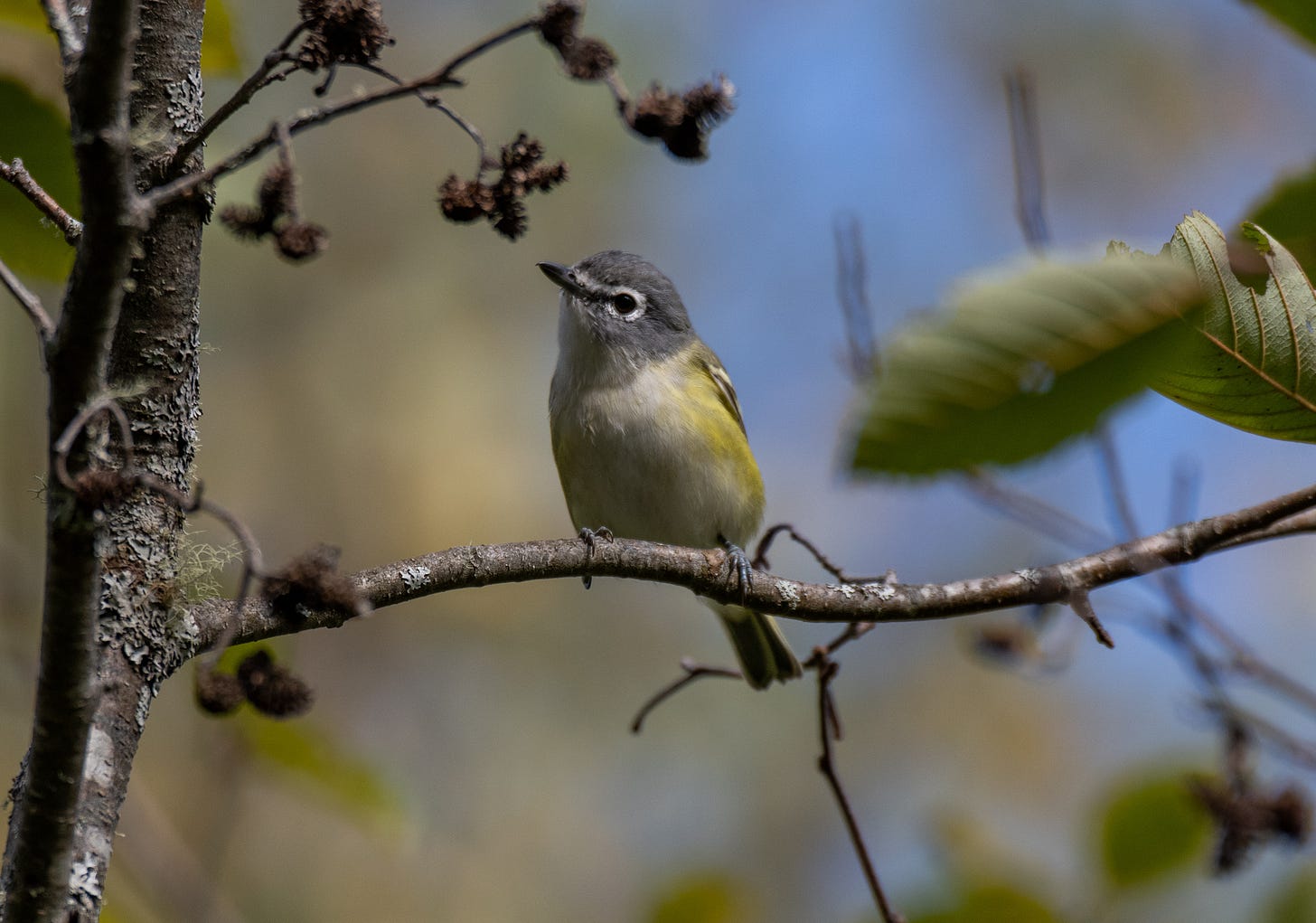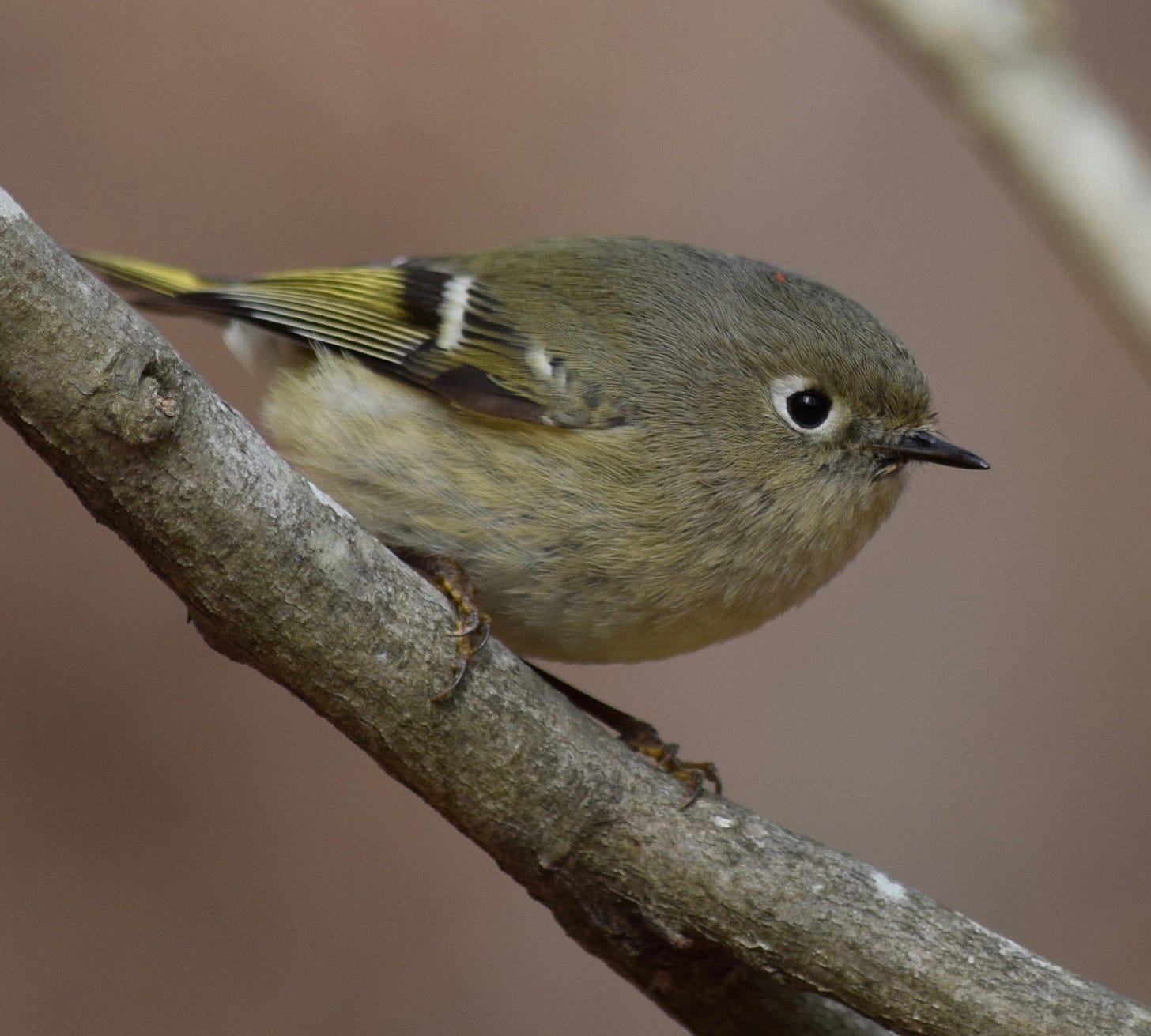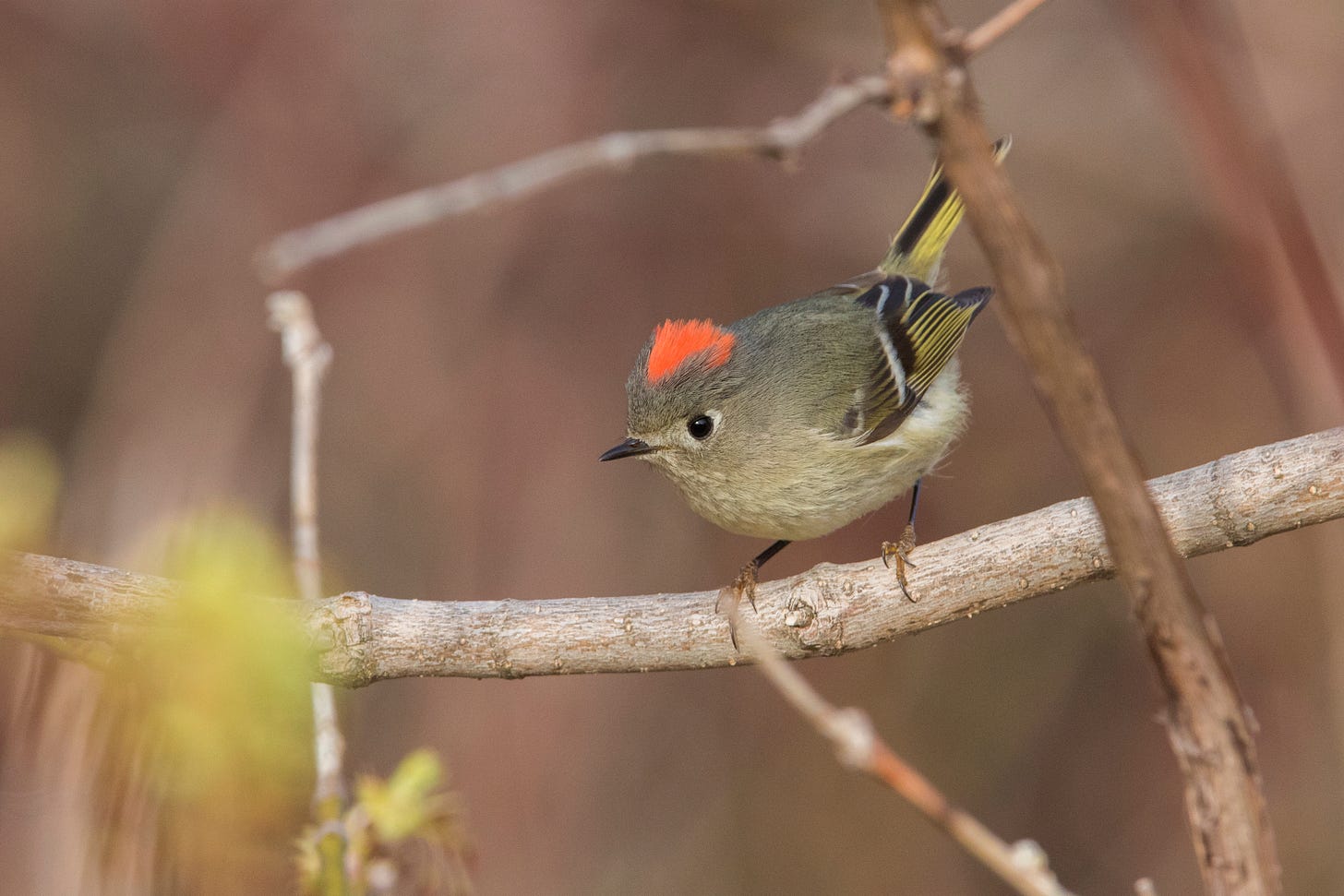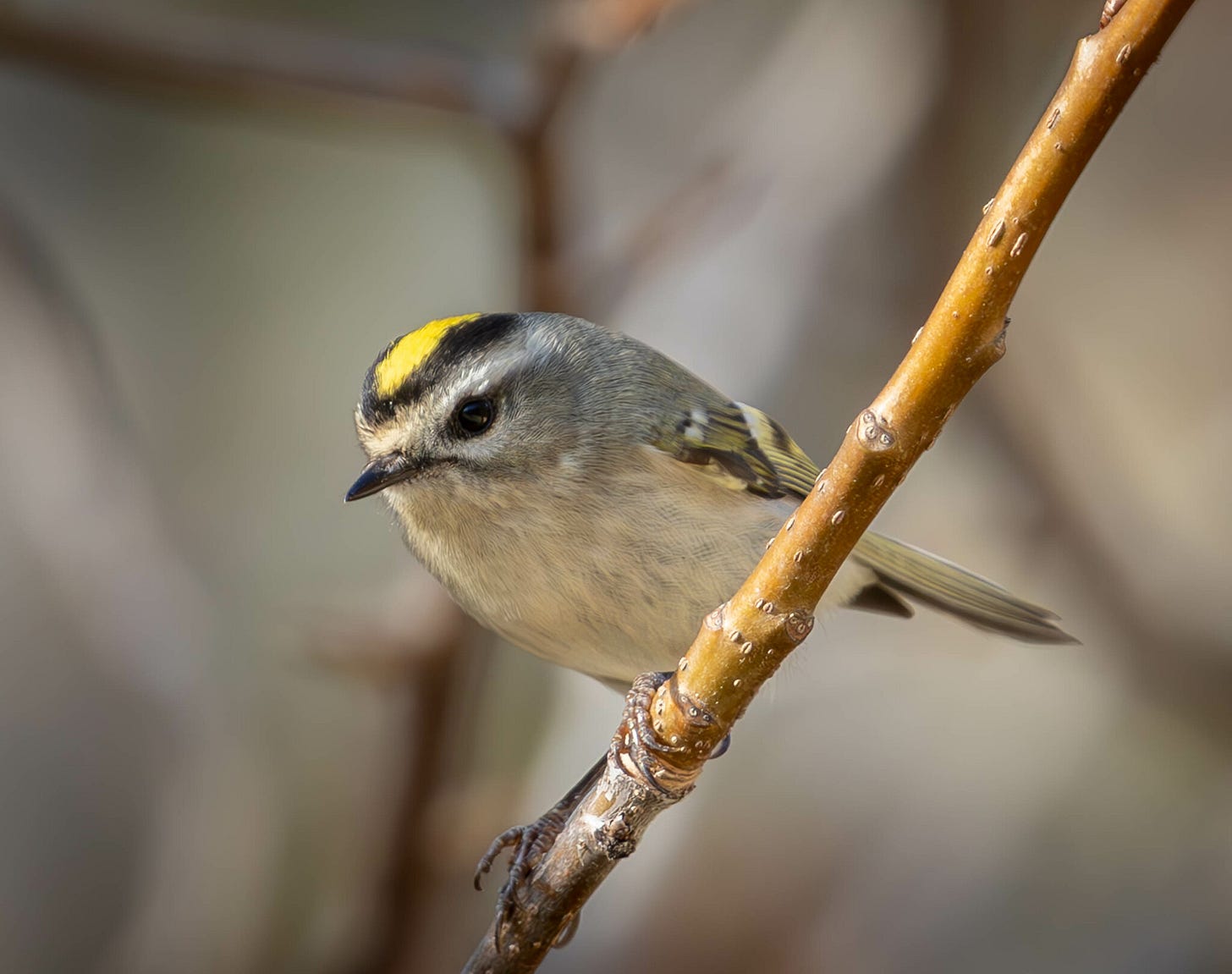
We find ourselves in Autumnal equinox, that short period when locales across our marbly blue god experience nearly equal periods of day and night.
In a micro-era when extreme opinions share philosophical spaces like primary genders do middle school dance floors—in a season when cooling winds inspire foe feelings of warmth and sadness, it can be soothing to think of our oldest opposites in balance.
- Bird Club Studio
MICRO-SEASON SEP 23—SEP 30
“Nature has taught me so much about moving with the seasons…the frenetic pace of doing, doing, doing without being present with each other and the season we are in, what is happening around us, is unnatural and counter to life.” —Brenda Salgado
Current Japanese micro-season: Thunder ceases. As for McGolrick Park, New York City and perhaps even larger swathes of the eastern US, we notice—
Leaves brown and air cools · Ragwort flowers · First of season Blackpoll Warbler, Eastern Phoebe
Dropping temperatures cue deciduous trees to enter abscission, a process in which nutrients once held in leaves are absorbed in order to sustain the trees during winter. Among the molecules broken down is chlorophyll. As that pigment recedes, green leaves go red, orange, brown and yellow. Then the leaves fall off—each one having fulfilled its purpose
BIRD REPORT
Who’d McGolrick Bird Club notice in situ this week?

Blackpoll Warbler · Blue-headed Vireo · Rose-breasted Grosbeak · American Redstart · Ovenbird · Magnolia Warbler · Red-bellied Woodpecker · Canada Goose · Northern Parula · Black-throated Green Warbler · Black-and-white Warbler · Scarlet Tanager · Ruby-crowned Kinglet · Northern Flicker · Gray Catbird · American Kestrel · Downy Woodpecker· Red-eyed Vireo · Blue Jay · Northern Cardinal · Common Grackle · Black-throated Blue Warbler · Baltimore Oriole · American Crow · Rock Pigeon · European Starling · American Robin · House Sparrow · Mourning Dove
Feel like you’re missing the migration gods’ missionaries? For the run of October, join us on Tuesday and Friday mornings, when birds are most active, starting around 6:30am. Just show up
Note that many of the above birds were seen wearing their “Female” plumage—what migrating birds of both sexes often sport in fall
MICRO-LESSON: KINGLETS
Kinglets! These little birds are juuust showing up in New York City. Kinglets are teeny—among North America’s smallest aves. They often flit around in squads. There are only two to learn.
Both species:
are smaller than warblers
are mostly gray
can be found across North America
wear similarly patterned white —> black —> yellow-tinged wing bars
As for the two species’ differences and distinguishing marks:
Ruby-crowned Kinglets are best ID’d by their large black eyes sandwiched between white. It’s giving anime eye. These birds occasionally move like hummingbirds, jumping up then momentarily hovering on rapid wingbeats.
The above photo may have you asking: WHERE’S THE CROWN? The ruby hairdos are actually retractable and only shows when the bird is aggravated or, like, horny. It’s a seriously wonderful ruby-red mohawk:
Golden-crowned Kinglets are always colorfully capped. Shocks of bright yellow surrounded by black, sit above white markings that give light brows and outline dark eyes.
That’s it for kinglets! You’re done! Good job!
P.S. Why aren’t these warblers?
For one, recent research shows that kinglets are genetically distinct from warblers, despite superficial similarities.
For two, kinglets don’t get quite as neo-tropical as warblers. They’re truly North American birds. Observe:

UPDATES & ANNOUNCEMENTS
Don’t forget to check out Day Owl’s beautiful bags made entirely of PFAS-free, recycled, landfill-bound materials. Get 20% off your first order via code MBCTITMOUSE20.
Head to NYC Luddite Club’s site. They’re a group of teens who forego social media / smartphones and prioritize analog experiences. They set up a Prospect Park scavenger hunt that runs ‘til October 13. Destroy the machines! (Or at least destroy their momentary subjugation of your attention by doing something IRL!)







